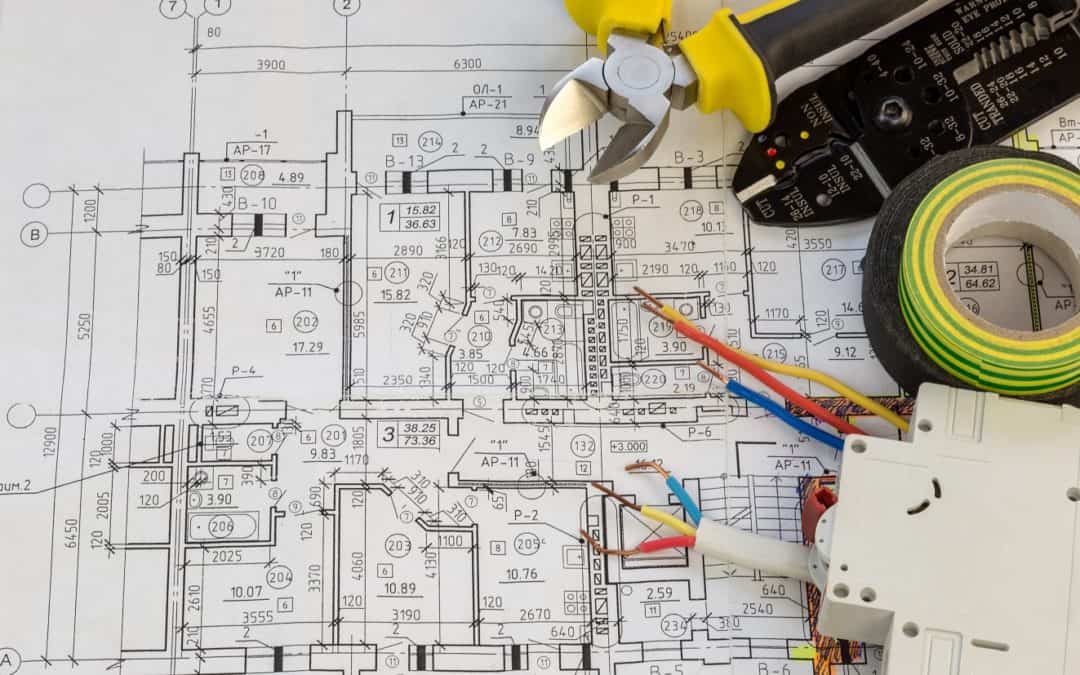Optimizing Industrial Electrical Design for High-Demand Operations
Ingenious Electric Design Services for Modern Infrastructure
The evolution of modern framework demands ingenious electrical design solutions that not just enhance operational performance yet also address sustainability difficulties. As urban environments grow significantly complex, integrating innovations such as clever grids and renewable resource sources becomes vital. These improvements not only guarantee to optimize energy consumption but likewise foster resilience versus future demands. Nevertheless, the landscape of electrical design is undergoing fast transformation, motivating a closer evaluation of emerging fads and their ramifications for long-term facilities feasibility. What might the future hold for those that accept these ingenious techniques?
Relevance of Ingenious Electrical Design
Cutting-edge electrical design plays an important function in contemporary framework, affecting not only performance but also sustainability. As cities advance and the need for power boosts, the requirement for innovative electric systems ends up being extremely important. These systems must not only satisfy present needs yet additionally prepare for future development and technical advancements.
A well-executed electrical design can dramatically lower energy usage, thereby lowering functional costs and decreasing environmental effect. By integrating sustainable energy sources, such as photovoltaic panels and wind turbines, cutting-edge designs can boost power self-reliance and resilience. In addition, smart grid modern technologies enable real-time surveillance and management of energy circulation, enhancing efficiency and lowering waste.
Safety and security is one more critical facet of electric design. Executing advanced technologies and strenuous requirements can minimize threats related to electric failures, guaranteeing a safe and secure atmosphere for residents and businesses alike. Additionally, cutting-edge styles promote flexibility, permitting facilities to incorporate arising innovations effortlessly.
Trick Fads in Electrical Design
As the landscape of electric design remains to evolve, several key trends are forming the future of the sector. One significant fad is the assimilation of wise modern technology into electric systems. The expansion of the Web of Things (IoT) has actually allowed real-time tracking and control of electrical tools, boosting effectiveness and facilitating predictive maintenance.
One more pattern is the growing emphasis on modular design. This approach permits scalable and versatile remedies, allowing infrastructure to adjust to changing requirements without considerable remodellings. In addition, making use of sophisticated simulation devices and Structure Info Modeling (BIM) is coming to be progressively prevalent, enhancing the design process and boosting collaboration among stakeholders.
Moreover, improvements in products science are resulting in the advancement of lighter, much more sturdy, and energy-efficient elements. This advancement is particularly important for high-performance structures and framework jobs.
Finally, there is a marked change towards data-driven decision-making - residential electrical design. Leveraging data analytics assists designers enhance systems for performance and cost-effectiveness. Together, these fads represent a transformative era in electric design, improving capability, sustainability, and resilience in modern-day facilities
Lasting Energy Solutions
Sustainable power services are significantly becoming an important focus linked here in electrical design, mirroring a broader dedication to ecological obligation and source effectiveness. These options intend to lessen environmental influence while enhancing energy usage in various infrastructures, from household structures to big industrial centers.
Among the foremost strategies includes the assimilation of sustainable power resources, such as solar panels and wind turbines, right into electric systems. This not only minimizes reliance on fossil site here fuels yet also enhances energy durability. Additionally, cutting-edge power storage systems, such as advanced batteries, make it possible for efficient administration and circulation of power, making certain that surplus power produced during optimal production can be used throughout high need periods.
In addition, energy-efficient design techniques are being taken on to improve overall system performance. This consists of utilizing energy-efficient lighting, cooling and heating systems, and clever building modern technologies that adapt and monitor energy usage based on tenancy and environmental conditions.
Smart Grid Technologies
The implementation of lasting power solutions normally results in the expedition of clever grid technologies, which play a crucial duty in updating electric systems. Smart grids leverage progressed communication innovations and information analytics to enhance the reliability, efficiency, and sustainability of electrical power circulation. By integrating digital technology with typical grid infrastructure, these systems assist in real-time monitoring, automated control, and boosted decision-making abilities.
Among the vital attributes of wise grids is their capacity to accommodate renewable resource resources, such as solar and wind power. This adaptability not just decreases reliance on nonrenewable fuel sources yet also enables an here extra decentralized power production model. Clever grids enable demand action programs, where consumers can readjust their power usage based on real-time rates, thus promoting power preservation and reducing peak tons demands.
Additionally, wise grid technologies enhance grid resilience by making it possible for quicker identification and resolution of interruptions, inevitably decreasing downtime. With predictive maintenance and analytics, utilities can boost and enhance operations service delivery. As communities and cities proceed to advance, wise grid modern technologies are vital for developing a sustainable and reliable electric facilities that fulfills the needs of modern-day culture.

Future-Proofing Facilities
To guarantee lasting stability and versatility, future-proofing framework is vital in the quickly progressing landscape of electric design solutions. As innovation advances and power demands shift, it is vital that electrical systems are created with adaptability in mind. This involves integrating scalable services that can accommodate future upgrades without requiring substantial overhauls.

Additionally, sustainability should be a foundation of future-proofed designs. Using renewable resource resources, such as solar and wind, and maximizing energy effectiveness minimize dependence on nonrenewable fuel sources, aligning with worldwide initiatives to deal with climate change.
Conclusion
By focusing on sustainability, efficiency, and versatility, these solutions address the developing demands of power systems. The assimilation of clever grid modern technologies and sustainable energy options enhances durability and decreases operational expenses.
A well-executed electric design can substantially decrease power usage, therefore reducing functional prices and minimizing ecological influence. By including sustainable energy sources, such as solar panels and wind generators, innovative styles can boost power independence and strength. Furthermore, innovative energy storage systems, such as advanced batteries, enable reliable management and distribution of energy, making certain that excess energy created during top production can be utilized during high demand durations.
Clever grids enable need reaction programs, where customers can readjust their power use based on real-time prices, consequently advertising power preservation and lowering peak lots needs. (electrical design services)
As modern technology developments and power needs shift, it is vital that electric systems are designed with versatility in mind.